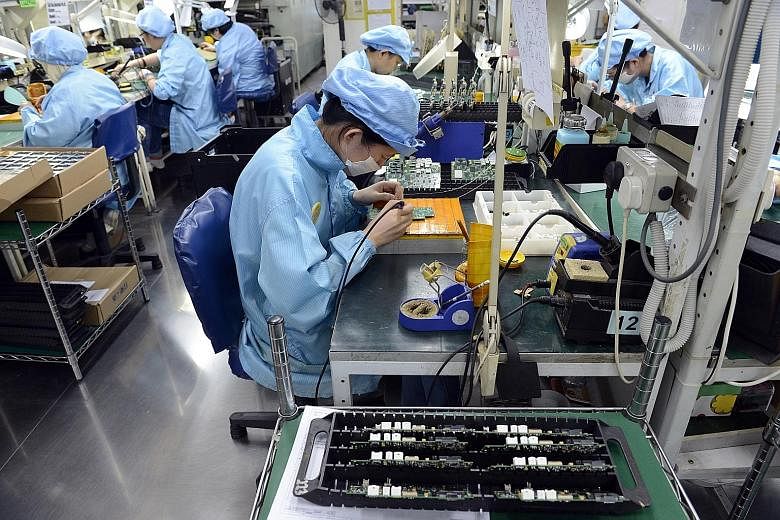Key trends affecting future growth
CHANGING GLOBAL ECONOMIC LEADERSHIP
The United States' and Europe's economic power, influence and leadership may have plateaued and could slowly ebb, said OCBC economist Selena Ling.
"While China has recently begun flexing its muscles, domestic economic challenges remain and its transition to a more open economy has been fraught with risks."
Other regional players also remain cautious about a potential new hegemonic power in the region, and would prefer a consultative, consensus-building process with practical cooperation.
DOMESTIC ECONOMIC RESTRUCTURING
Restructuring and the resulting labour shortage have been weighing on growth in recent years.
The manufacturing sector, for instance, has been hit hard by ongoing restructuring, rising business costs and the strength of the Singapore dollar, which has made exports more expensive. It remains to be seen if Singapore companies will be able to pull through the painful restructuring process and become more productive.
What Singapore needs to do to remain competitive
RECALIBRATE THE ECONOMY
Continue the shift away from electronics.
Manufacturing's share of the economy has dipped below 20 per cent, from as high as 22.2 per cent in 1981, and the contribution to jobs has fallen even faster.
Electronics growth, in particular, has been tepid, and the manufacturing engines have turned to the biomedical and transport engineering industries. This means the economy will rely increasingly on contributions from the service sector.
Explore new growth catalysts such as the integrated resorts
It is imperative to find new growth catalysts to sustain growth for the coming decades, OCBC's Ms Ling said. For instance, the two integrated resorts were supposed to be catalysts to drive Singapore's growth and rejuvenate the tourism industry, she noted.
However, the allure of the IRs appears to be fading, especially with the growth slowdown in China and the ongoing anti-corruption campaign there.
Explore new key trading partners
The Asean Economic Community, the Trans-Pacific Partnership, China's One Belt, One Road initiative, and the Asian Infrastructure Investment Bank potentially hold many growth opportunities for regional countries including Singapore, said Ms Ling.
"The increased regional connectivities will benefit trade, infrastructure, investments, capital and labour, and ultimately boost growth."
UPGRADE THE LABOUR FORCE
Groom entrepreneurs and innovation
For innovation and creativity to work, risks have to be taken, said OCBC's Ms Ling.
"Playing a careful game of cards may not suffice in a global environment with radical disruptions in technology and business models, where political arenas are constantly evolving," she said.
Drive productivity
Companies need to be early and open adopters of new technologies, and have a culture of continual productivity improvement.
"The motivation cannot be compelled or simply driven by monetisation, but empowering an individual to 'own' the outcome will make the difference between mediocrity and excellence," said Ms Ling.
The use of robots might also be an option, since Singapore is facing an ageing population and has to manage the foreign worker intake for socio-economic reasons.
Drive creation of new jobs that will replace obsolete jobs
Have close collaboration between economic agencies, companies and educational institutions to identify new growth areas with the potential to create jobs to replace obsolete jobs for Singaporeans, and subsequently train and upskill the labour force for these new jobs.
Foreign worker infusions to rejuvenate the ageing population
A tighter inflow of foreign workers coupled with an ageing population may boost wages, but unless productivity gains rise in tandem, the transition to a new level of sustainable medium-term growth may be bumpy.
Policymakers will have to strike a fine balance between boosting productivity and ensuring sustainable wage growth.
"Raising the bar for performance expectations for both local and foreign workers (can lead to a) win-win proposition."

